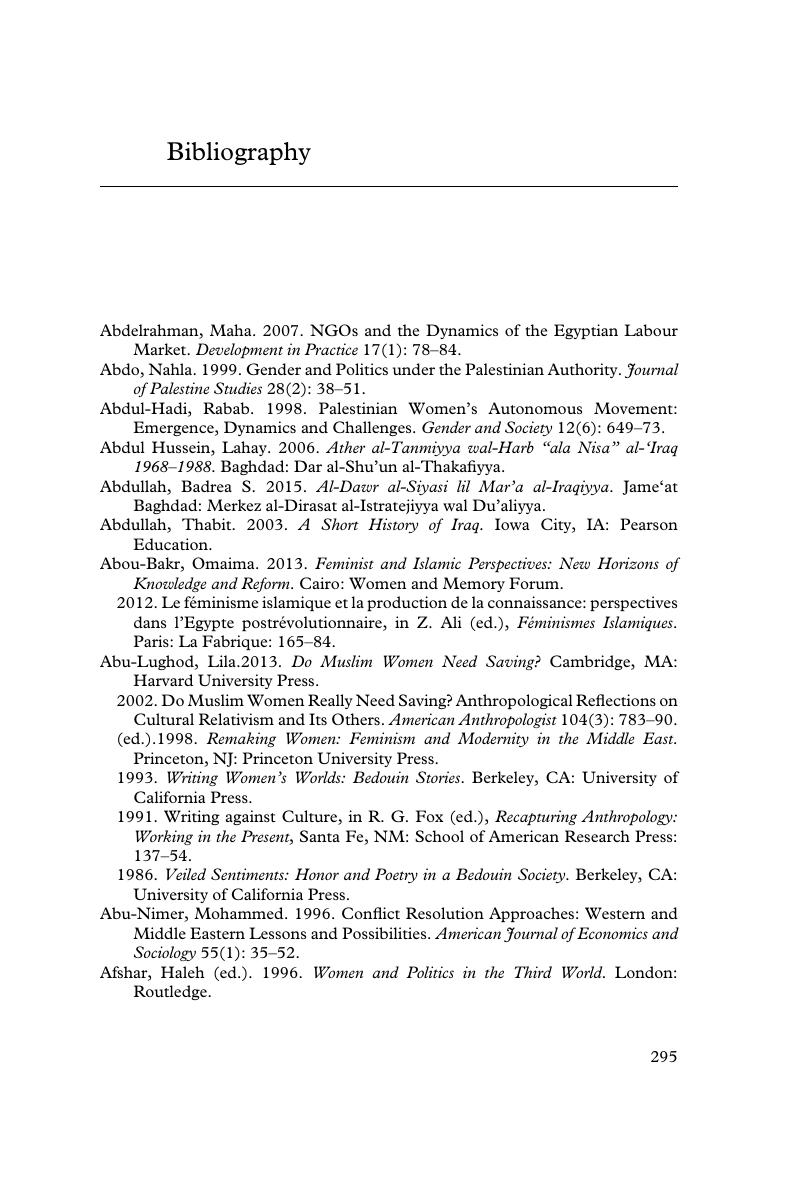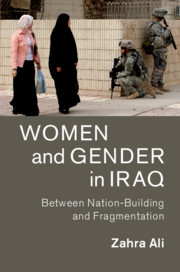Book contents
- Women and Gender in Iraq
- Cambridge Middle East Studies
- Women and Gender in Iraq
- Copyright page
- Dedication
- Contents
- Figures
- Maps
- Acknowledgments
- Organizations, Networks, and Groups
- Note on Translation and Transliteration
- Introduction
- 1 Genesis of the “Woman Question”
- 2 Women, Gender, Nation, and the Ba‘th Authoritarian Regime (1968–2003)
- 3 Experiencing the Invasion and Occupation and the Women of the New Regime
- 4 The Emergence of Women’s Groups and Networks
- 5 Kurdish Women’s Activism in Iraqi Kurdistan
- 6 Mobilizing for Women’s Legal Rights
- 7 Iraqi Feminisms
- Conclusion
- Bibliography
- Index
- Books in the Series
- References
Bibliography
Published online by Cambridge University Press: 27 August 2018
- Women and Gender in Iraq
- Cambridge Middle East Studies
- Women and Gender in Iraq
- Copyright page
- Dedication
- Contents
- Figures
- Maps
- Acknowledgments
- Organizations, Networks, and Groups
- Note on Translation and Transliteration
- Introduction
- 1 Genesis of the “Woman Question”
- 2 Women, Gender, Nation, and the Ba‘th Authoritarian Regime (1968–2003)
- 3 Experiencing the Invasion and Occupation and the Women of the New Regime
- 4 The Emergence of Women’s Groups and Networks
- 5 Kurdish Women’s Activism in Iraqi Kurdistan
- 6 Mobilizing for Women’s Legal Rights
- 7 Iraqi Feminisms
- Conclusion
- Bibliography
- Index
- Books in the Series
- References
Summary

- Type
- Chapter
- Information
- Women and Gender in IraqBetween Nation-Building and Fragmentation, pp. 295 - 311Publisher: Cambridge University PressPrint publication year: 2018



